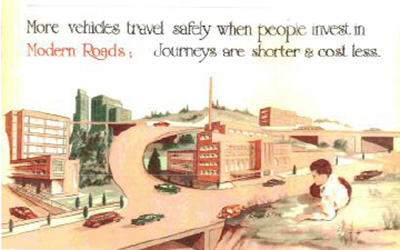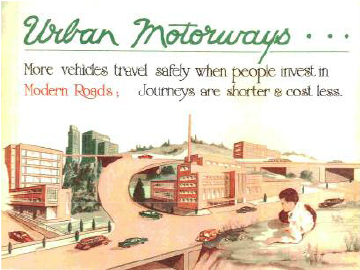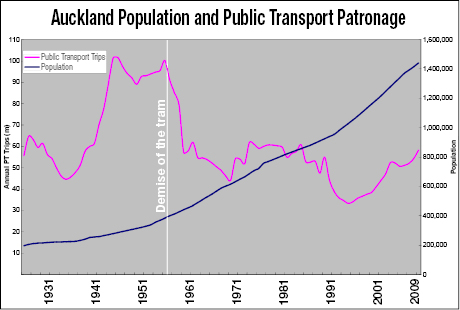World’s first city to rebuild beyond sea-level rise


Minister of Transport 1953 to New Zealand Herald transport reporter at the opening of Auckland’s first section of motorway: ‘My boy, the future of Auckland belongs with the motorcar.’ Slow Train Coming: The New Zealand State Changes its Mind About Auckland Transit, 1949-1956 Christopher E Harris PhD (Planning)
On 29 October 1954, Wellington agreed to build the Auckland Harbour Bridge. Government’s decision had been contingent on Auckland City Council voting to effectively bury its aspirations for underground rail, on the previous day.
Not only did Auckland not get a rail crossing, it had been forced to forgo meaningful urban rail. Auckland Unleashed is a courageous discussion of the region’s future, but its 220 pages confirm that the metropolis has major, fundamental flaws, which date from Auckland’s Faustian deal with Sidney Holland’s National government. A rail only, or rail with vehicle capacity limited to the original four lanes of the bridge, would have resulted in a viable density of development northward along the rail route.
Active government involvement similar to that in Porirua and the Hutt Valley in the 1930s and 1940s could have ensured the requisite density of development to the south and west. To retrospectively achieve an adequate density of development along rail routes now, the discussion document advocates new legislation to permit the radical redevelopment of 18 town centres.
The wholesale redevelopment envisaged deserves to be supported by Aucklanders, and by their government, regardless of how sickeningly socialist the measures will appear to free‑market ideologues—it would be state‑led urban development on a scale not seen since that initiated by 1935–1949 Labour governments. But even if support is gained to establish the redevelopment authorities, the effort would be better spent on greenfield development—greenfield development, at a greater elevation.
The authors of Auckland Unleashed, and the Auckland Council politicians who approved it, clearly believe that the Auckland spatial plan discussion document is global‑warming savvy:
The Mayor has set an ambitious target—to cut carbon emissions to 40% below 1990 levels by 2030.
The council, and city councils worldwide, acknowledge sea-level rise. But most base their concern on the 2007 Intergovernmental Panel on Climate Change range of 180–590 millimetres, which was consciously incomplete. Hansen and Sato state:

Sin of Omission: From more than 80 million trips per year, public transport patronage nose-dived after the tramlines were torn up by a city impatient for its cars to have unfettered access to the roads, and Auckland’s road congestion woes began in earnest. Sins of the Fathers: The Fall and Rise of Rail Transit in Auckland Mike Lee
IPCC projections did not include contributions from ice sheet melt, on the grounds that we do not understand ice sheet physics well enough. That is reasonable, but if ice sheets pose the danger of sea-level rise far exceeding other mechanisms, then it deserves to be front and center in communication with policymakers. Given the near impossibility of getting policymakers to consider far future effects, the practical question then becomes: how much can ice sheets contribute to sea level rise on the time scale of a century?
Sea-level rise in about the last decade has doubled. Had the National Aeronautics and Space Administration been doing a better job of protecting the home planet, the satellite measurements would be more detailed and would go back further. Such data would give better indication of the actual doubling time, which is crucial in plotting likely future sea-level rise scenarios. A doubling period for ice sheet loss of 10 years produces a rise of 5 metres this century, whereas a 5‑year doubling period yields the full rise available, about 80 metres, by an eye‑watering 2075.
The question folk new to the enormity of sea-level rise will likely first ask, is how soon will the sea level fall?
For the sea level to fall, ice caps would need to form—it is entirely improbable that they will other‑than completely disappear, courtesy of the carbon dioxide level, current and committed.
It takes a fortuitous set of circumstance for ice caps to form, including a propitious state of the Milankovic cycles. It also helps for the Sun to be cooler than it is now. But firstly the carbon dioxide that mankind has added to the atmosphere has to be reduced, and that will take an eternity. University of Chicago oceanographer Dr David Archer:
The lifetime of fossil fuel CO2 in the atmosphere is a few centuries, plus 25 percent that lasts essentially forever.
Over geological time, natural rock weathering and subduction will scrub carbon dioxide from the atmosphere. But, as Professor Archer writes:
The climatic impacts of releasing fossil fuel CO2 to the atmosphere will last longer than Stonehenge. Longer than time capsules, longer than nuclear waste, far longer than the age of human civilization so far.
So the short answer is, the sea level will not fall anytime soon.
By consistently failing for decades to heed the warning to throttle back emissions, and to scale back human demands on resources generally, humanity must rapidly redevelop above a new and muddy tidemark, preferably without further‑fuelling out‑of‑control warming.
Auckland has a head start in that it is now a unitary authority, and thus able to address the challenge regionally. Ironically, one of its responsibilities will be determining where city centres for Brynderwyn, Tamahunga, Mahurangi, Waitakere and Hunua should be established—areas that would have stayed determinedly independent of Auckland, had they already become islands prior to amalgamation.
It is not ironic, however, that Auckland will be drowned as a consequence of the over‑consumption of fossil fuel. With its over‑reliance on motorways, it has been disproportionately complicit.
Shamefully, Auckland Unleashed contains endorsement of the planned Pūhoi–Wellsford motorway, albeit termed highway—a mild distinction. While this concession to the Minister of Transport is not on a par with the 1954 sacrifice of urban rail, it is also probably academic, being a nice‑to‑have, to borrow the Minister of Finance’s term for unjustifiable projects.
Throughout Auckland Unleashed runs a theme of wanting to be noticed, as ‘the world’s most liveable city’ a.k.a ‘the Mayor’s vision’. Saying everything by saying nothing is clearly intentional, but a meaningful vision that would get the world’s attention is:
World’s first city to rebuild beyond sea-level rise.
